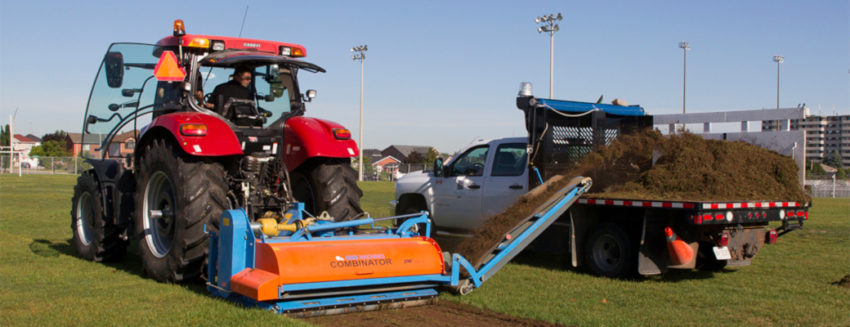Since inception in 1975, Greenhorizons has been seeking the most effective methods for installing, rejuvenating, and maintaining high performance turf. Thanks to European ingenuity in the mid 90’s, we were able to incorporate an incredibly valuable tool into our arsenal of turf care: fraize mowing.
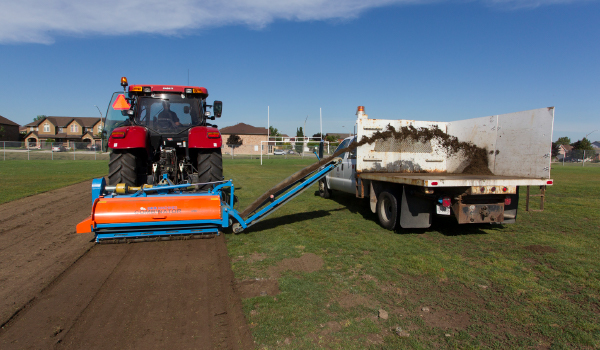
Addressing the layer of thatch on grass is an essential part of maintaining this high quality turf. Excess organic matter that accumulates on the turf’s thatch layer must be removed.
What is Thatch?
Thatch is a layer of grass shoots, stems, and roots (stolons and rhizomes). These bits of organic matter are either alive and well or dead and will be broken down into nutrients for the plant! Thatch build-up occurs when the turf produces organic debris faster than it can be broken down. This is a common occurrence on high-performance turf pitches.
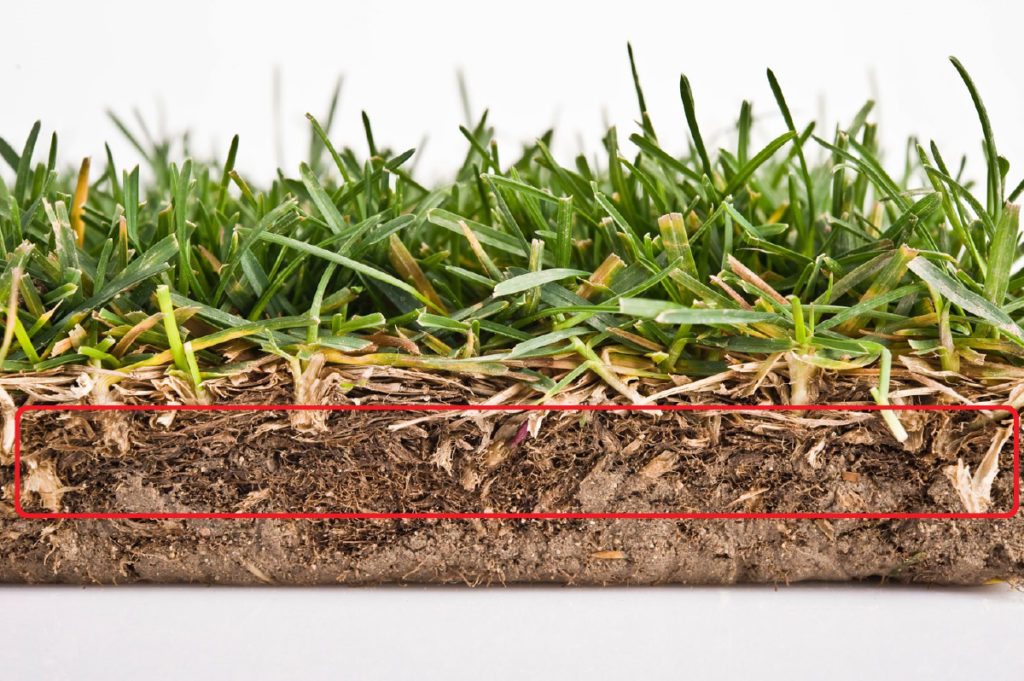
Thatch provides many benefits to turfgrass including insulating, protecting from physical damage, and promoting lateral growth. It’s also a nice cushion for any players that happen to fall on the pitch!
Unfortunately, it’s not all sunshine and rainbows when it comes to thatch… Thick thatch can cause extensive root damage due to the rate at which it heats up and dries out. It can also retain excess moisture during rainy periods which results in root rot. Sometimes, thick thatch layers can conceal large populations of disease-causing organisms. Ultimately, you want a thatch layer that’s not too thick, not too thin, but just right!
Traditionally, sports turf managers have controlled thatch using core aeration. This helps to correct soil compaction and improve air circulation in the soil. Improved air circulation promotes microbial activity. These healthy microbes in the soil are essential to turfgrass performance. These microorganisms process soil nutrients so that they’re readily available for the plant to absorb. Topdressing with a sandy soil after aeration will help decompose the thatch layer, and also help with water percolation which prevents root rot.
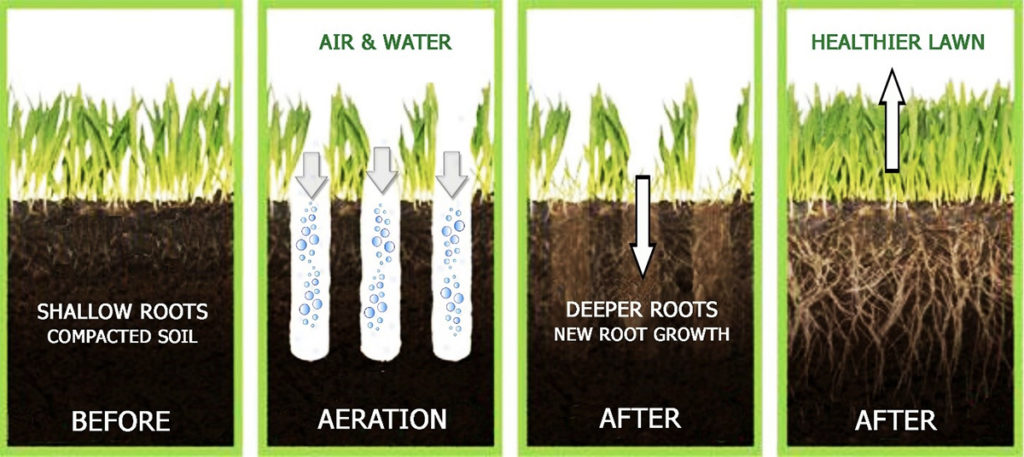
Lay Down the Law Before Beginning
Since the introduction of fraize mowing, core aeration isn’t the only way to manage thatch… If the thatch layer is out of control, and you’ve concluded that the field in question requires intensive renovation, go on and put that fraize mower to work. Be aware, however, that fraize mowing is a very aggressive process and it must be part of a comprehensive renovation strategy. Establish several parameters before you begin fraize mowing. Pay attention to depths, expectations, field conditions, and field downtime. It is crucial to have an initial discussion to ensure that fraize mowing is truly the right solution. Proper execution is also extremely important.
What Exactly is Fraize Mowing?
The concept of fraize mowing is simple: remove the top layer of organic matter including thatch, weeds, and invasive grasses, while leaving the main root structure and crown intact. In conjunction with an overseeding process, this main root structure will regrow. There are several different types of fraize mowers that each have their own unique applications. From straight bar, to carbide tip round shank, to a 90-degree tiller blade; as a sports turf manager, you have options. With each implement, you also control depth. Whether you are planning on simply re-growing, overseeding, slit seeding, drop seeding and top dressing, coring and overseeding, or sodding, you can find the perfect fraize mower and depth combo to achieve the best results.
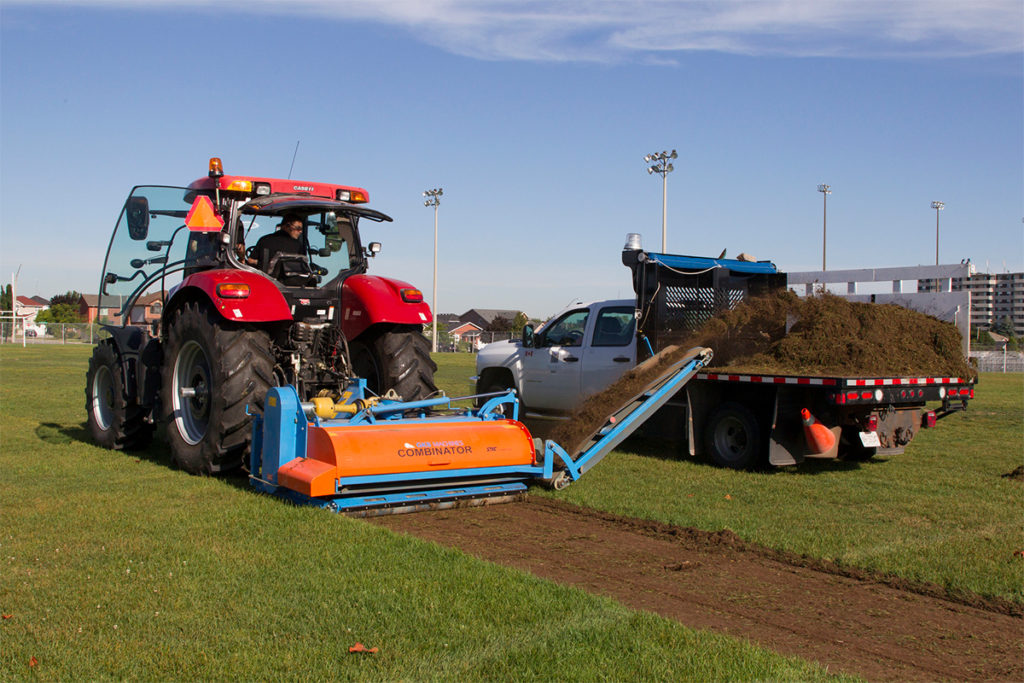
Removing Organic Debris
Part of fraize mowing a field is removing all the organic debris! Even light fraize mowing will remove hundreds of yards of material that will need to be pulled off the field using trailers, wagons, or trucks. A close dump site is essential and a plan for how to compost the material for later use will help immensely.
Since fraize mowing removes so much organic debris, it is an excellent cultural practice from an Integrated Pest Management perspective. Instead of using chemical solutions to combat broad leaf weeds and Poa Annua, fraize mowing can pull away any seeds and stands that would have out-competed your desired cultivar. As previously mentioned, fraize mowing will also reduce the amount of thatch in your field, which can be home to disease-causing microorganisms! It is an excellent cultural alternative to the many chemical solutions used to treat diseases.
Level it Out!
The fraize mowing process will also remove small divots and undulations from the field. That gorgeous flat field once you’ve finished fraize mowing will light up your day! In extreme cases, when there are large divots and holes, the field will need to be terra-planed.
Terra-Planing
Terra-planing is a deeper, more aggressive form of mowing. This is almost only used when fresh sod is to be laid, or if the field is too uneven to simply be seeded. Typical terra-planing depth is 1.5-2 inches. Sod will root and interface with the existing root structure much better if the surface has been terra planed. Since seed requires a long time to establish and grow a usable field, terra-planing is not recommended when overseeding.
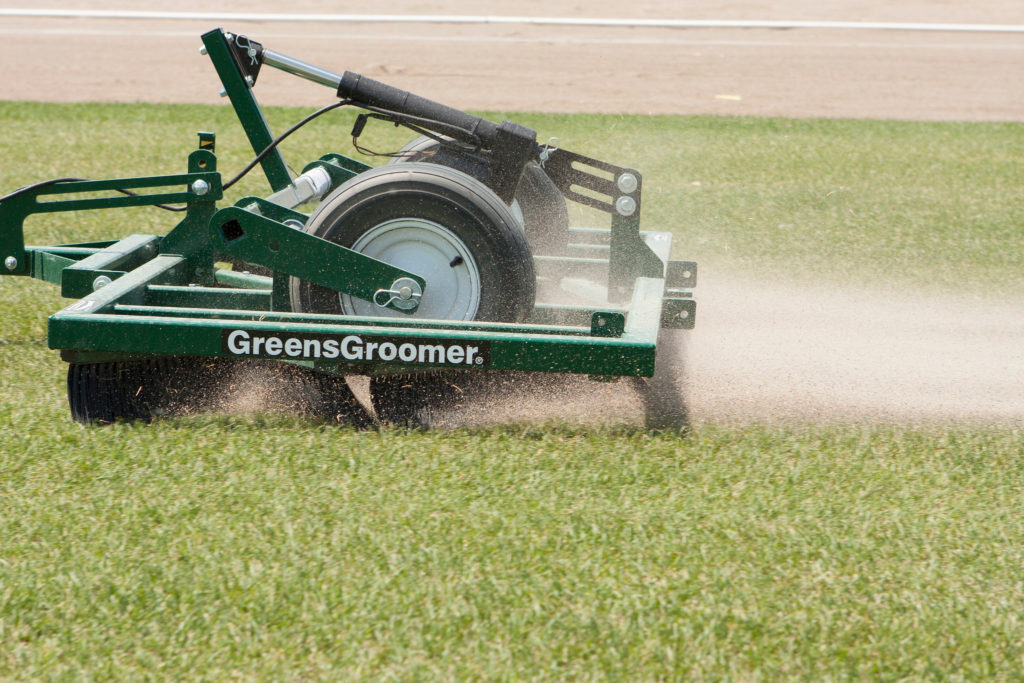
If you choose to lightly fraize mow a field, the post-mow process is typically to topdress, groom, lay an aggressive starter fertilizer application, seed, and water. In order to allow the stolons and rhizomes time to regrow, this process must begin immediately.
Fraize Mowing Depth
Here at Greenhorizons, we find that a medium fraize mowing depth in a reasonably even field, followed by mechanical slit seeding provides excellent results. When slit seeding, depth is crucial! Be careful not to plant the seeds in the left-over organic matter, but right down into the soil. Direct seed-soil contact is critical to the success of the project.
A method that has also worked extremely well for Greenhorizons is to terra-plane the center 15,000 to 20,000 square feet of the field and re-sod that area. Then, fraize mow the outer edges of the field at a light to medium depth and topdress or slit seed that area. This will provide a usable field in approximately 6 weeks depending on the initial conditions of the field.
When is the Best Time?
The ideal time to fraize mow for us is the first two weeks of September. It is essential for the field to fully recover before programming begins in late May or June. Recovery can take place over the fall and winter months and have the field ready for the new season! Keep in mind that it is highly recommended to complete your fraize mowing project before the irrigation system is winterized. Some days in September and October can be very windy and dry!
Once a field has been fraize mowed, be sure to have all your tools and materials ready to go immediately following completion. Whether you’re seeding, topdressing, or coring, having your equipment prepped and ready to go is key. Additionally, having water access and irrigating as soon as possible will prevent the field from desiccating.
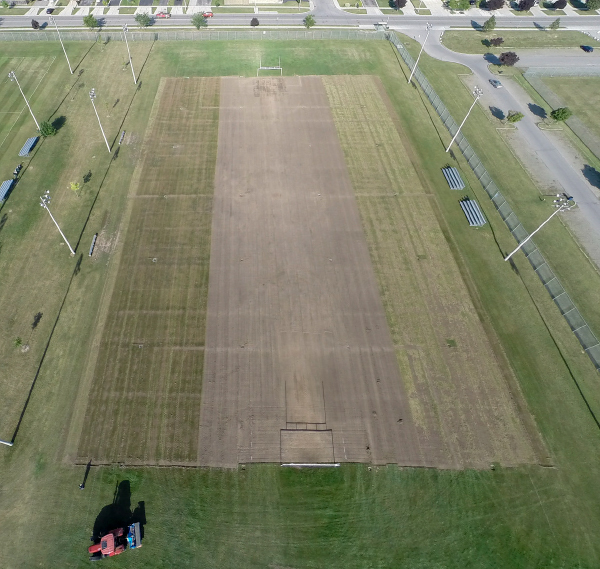
Remember that you need to give the field time to recover after fraize mowing! Improper field management following this process can result in a field in worse condition than before. Be sure to have plenty of time allocated to the project in anticipation of potential hang-ups. You need to be very detail-oriented when fraize mowing so as to complete the project properly and in a timely manner.
Soccer Field Specifics
A word of caution, especially when it comes to soccer fields, never renovate only the goal mouth’s and centres. Although this is what typically wears out first, the ability to keep these smaller areas intensively maintained is very difficult. Choose a reasonable width for the centre and fraize mow from end to end. This can typically be irrigated with a zone or two, and can be mowed separately from the rest of the field allowing the renovated area time to establish without traffic.
Good Luck with Fraize Mowing!
In summary, fraize mowing can be an excellent tool in the turf manager’s bag of tricks, but it must be part of an overall rejuvenation plan. If you plan on fraize mowing, remember these key points: establish a complete renovation plan before starting; consult with a company who has rejuvenation experience; ensure water is readily available for a speedy recovery; and make sure you have the equipment to haul a large amount of organic material and enough space to compost it.
